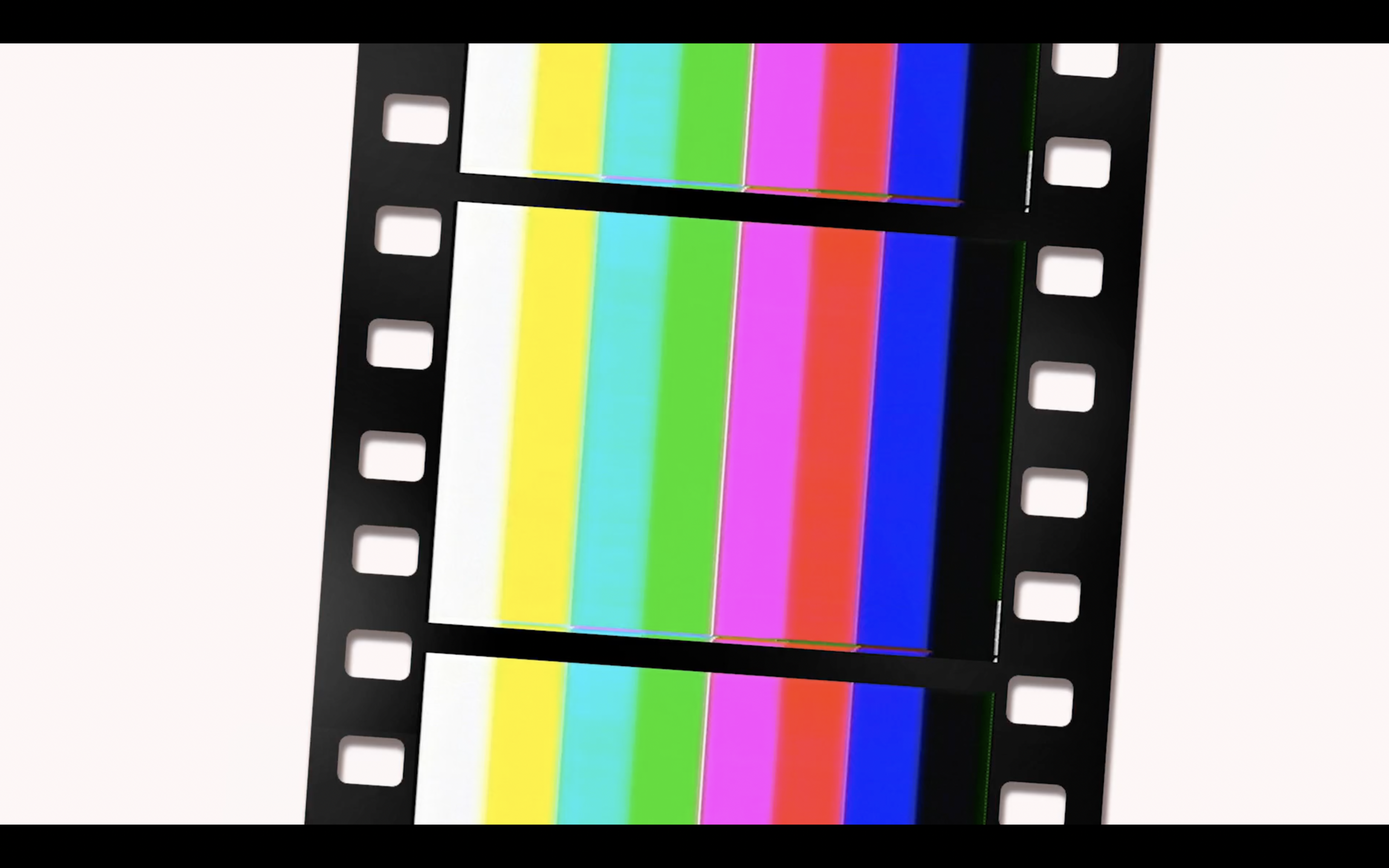Curatorial project at the Wexner Center for the Arts (Columbus, OH)
February 1–28, 2018
Forty-five unsuspecting women are prompted to define irony in mere seconds. The result is equal parts documentary and comedy. In I KNOW IT WHEN I SEE IT (DEFINE IRONY), Eileen Maxson presents this challenge and captures her participants’ candid search for words and the often hilarious responses they manage to muster, their reactions ranging from placid to embarrassed to irritated and inevitably laden with Alanis Morissette references. Morissette’s 1995 hit single “Ironic,” unintentionally ironic in its misconstruing of the word, feels at home among the throwback aspects of the video itself: the artificial sound effects like the ticking timer, VHSquality footage, and test-pattern color bars sliding across the screen to transition to the next sitter.
With retro influences abounding, the video principally cites the 1994 romantic comedy Reality Bites. In an iconic scene, protagonist Lelaina is rejected from a string of TV and news jobs. But in a last-ditch attempt to salvage one interview, she is asked to define irony while being escorted out of the office—only to exclaim “I know it when I see it!” as the elevator doors close on her.
Lelaina herself is an aspiring filmmaker who records a documentary featuring the everyday lives of her friends. She shares the footage with her boyfriend, a television executive at a fictional equivalent to MTV. He helps Lelaina pitch and sell her footage to the network, but at the debut of Reality Bites, she discovers her work has been compromised for a derivative, unflattering parody of those closest to her. Reeling from this public failure, she laments to her other love interest, Troy, “I was really going to be something by the age of 23.”
In the postmodern sense of the term, irony represents something self-referential. By the end of the 20th century, film, art, and literature seemed at such a loss to find artistic direction that their most meaningful next move was to quote themselves—which is not to be mistaken with nostalgia, since irony is too devoid of sincerity to be as sentimental as nostalgia. Postmodern irony has come to be conflated with aloofness and cynicism, both of which are personified in Troy, the slacker-cum-philosopher who cannot keep a job but who coincidentally provides the textbook definition of irony when Lelaina tells him about the fateful interview.
But there is another type of irony, romantic irony, that is self-conscious insofar as a work points to its own fictionality as a means to reveal some form of truth. While quoting and restaging the scenario from Reality Bites, I KNOW IT WHEN I SEE IT (DEFINE IRONY) thus reveals the truth of its own making in each awkward silence and incorrect answer from the sitters, all of whom, like Lelaina, are 20- to 30-somethings working in the creative sector. It is in the blurring between Lelaina and Maxson’s contemporaries and the interplay of the retro, the recycled, and the recollected that several truths emerge: the gap between a woman’s intention and how her words are received or (mis)interpreted; the ever-shrinking age by which she should achieve success; and the depiction of creative, aspirational women as perfectionist, careerist caricatures.
While Maxson does not articulate this overtly, she implies these truths through the affinities and figurative exchanges among fictional and real portrayals of women. The bitter reality of these societal pressures can explain a sitter’s hesitant pause, reviewing her response before uttering it so as not to say the wrong thing. Or the look of embarrassment and the self-deprecating laughter. Or the searching in her eyes to quickly conjure the correct answer and prove something about herself. Though the evidence of these effects is subtle and often can only be intuited, you know it when you see it.
Image: Eileen Maxson, I KNOW IT WHEN I SEE IT (DEFINE IRONY) (still), 34 mins., HD video, 2015. Photo courtesy the artist and Microscope Gallery.
